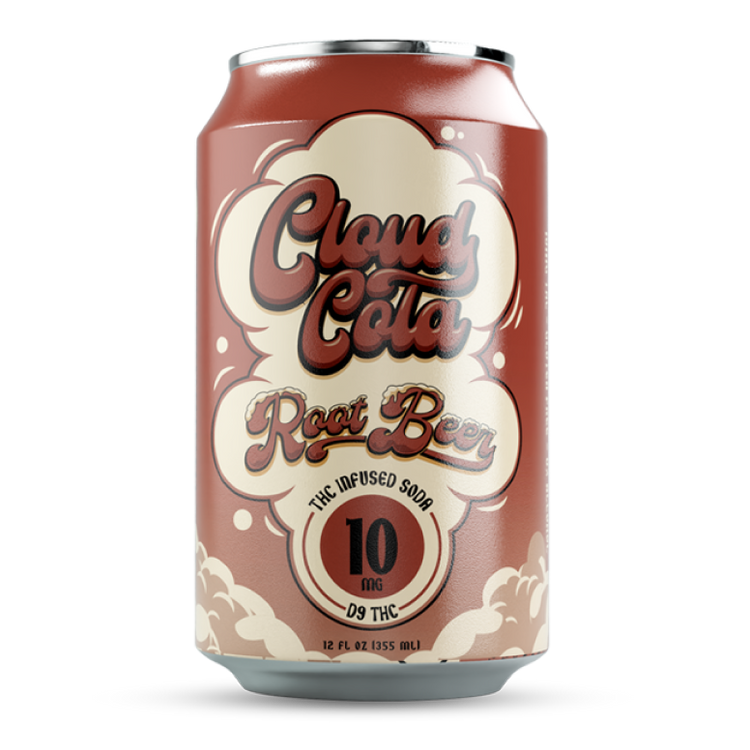THC Absorption Through the Gastrointestinal System
While smoking or vaping delivers THC rapidly into the bloodstream, consuming it through edibles like gummies or sodas involves a different process. THC absorbed through the gastrointestinal system first passes through the liver, where it’s metabolized into 11-hydroxy-THC, a compound with potentially stronger psychoactive effects than THC itself. This metabolic step takes time, contributing to the delayed onset but often longer-lasting effects associated with edibles.
How Edibles Are Metabolized
The process of absorption and metabolism plays a crucial role in understanding how quickly and intensely edibles affect individuals. Unlike smoking or vaping, which deliver THC directly into the bloodstream, edibles require a journey through the gastrointestinal system before reaching systemic circulation.

When consumed, THC from edibles is broken down in the stomach and small intestine, then absorbed into the portal vein, leading directly to the liver. This is where the magic (or maybe madness) happens: the liver converts THC into 11-hydroxy-THC, a more potent form of the compound.
This conversion process takes time, contributing to the delay in feeling the effects of edibles compared to other consumption methods. The delayed onset can range from 30 minutes to several hours depending on factors like individual metabolism, food intake, and the dosage consumed. The extended duration of action also stems from 11-hydroxy-THC’s longer half-life, meaning it stays in the system for a more extended period.
Factors Affecting Edible Onset Time
Several factors influence how quickly THC is absorbed through the gastrointestinal system and ultimately affects an individual when consuming edibles.
The type of edible plays a role. Highly processed or fat-soluble products tend to be absorbed faster than those with lower fat content. Food intake can significantly impact onset time. Eating a large meal before or while consuming edibles slows down digestion, delaying THC absorption. Individual metabolism, influenced by factors like body weight and enzyme activity, also varies, leading to differences in absorption rates. The amount of THC consumed is directly related to the intensity and duration of effects. Dosage directly correlates with the strength and length of the experience.
THC Absorption Through Sublingual and Oral Consumption
While smoking or vaping delivers THC rapidly into the bloodstream, consuming it through edibles like gummies or sodas involves a different process. The absorption and metabolism of THC play a crucial role in determining how quickly and intensely edibles affect individuals. Unlike smoking or vaping, which deliver THC directly to the bloodstream, edibles require a journey through the gastrointestinal system before reaching systemic circulation.
The Role of the Mucosa

The human mucosa is a vital player in the absorption of THC, both sublingually (under the tongue) and orally (by mouth).
- Sublingual Absorption: When THC is placed under the tongue, it is absorbed through the thin mucosal lining into the bloodstream. This route bypasses the liver’s first-pass metabolism, leading to faster effects compared to oral consumption.
- Oral Absorption: When THC is swallowed, it travels to the stomach and small intestine where it is absorbed into the portal vein, carrying it directly to the liver. The liver metabolizes THC into 11-hydroxy-THC, a more potent form of the compound. This process takes longer than sublingual absorption, resulting in a delayed onset of effects.
The efficiency of THC absorption through both routes is influenced by factors like individual metabolism and the specific formulation of the product.
Speed of Absorption Compared to Edibles
While smoking or vaping delivers THC rapidly into the bloodstream, consuming it through edibles like gummies or sodas involves a different process. THC absorbed through the gastrointestinal system first passes through the liver, where it’s metabolized into 11-hydroxy-THC, a compound with potentially stronger psychoactive effects than THC itself. This metabolic step takes time, contributing to the delayed onset but often longer-lasting effects associated with edibles.
The process of absorption and metabolism plays a crucial role in understanding how quickly and intensely edibles affect individuals. Unlike smoking or vaping, which deliver THC directly into the bloodstream, edibles require a journey through the gastrointestinal system before reaching systemic circulation.
When consumed, THC from edibles is broken down in the stomach and small intestine, then absorbed into the portal vein, leading directly to the liver. This is where the magic (or maybe madness) happens: the liver converts THC into 11-hydroxy-THC, a more potent form of the compound.
This conversion process takes time, contributing to the delay in feeling the effects of edibles compared to other consumption methods. The delayed onset can range from 30 minutes to several hours depending on factors like individual metabolism, food intake, and the dosage consumed. The extended duration of action also stems from 11-hydroxy-THC’s longer half-life, meaning it stays in the system for a more extended period.
Several factors influence how quickly THC is absorbed through the gastrointestinal system and ultimately affects an individual when consuming edibles.
The type of edible plays a role. Highly processed or fat-soluble products tend to be absorbed faster than those with lower fat content. Food intake can significantly impact onset time. Eating a large meal before or while consuming edibles slows down digestion, delaying THC absorption. Individual metabolism, influenced by factors like body weight and enzyme activity, also varies, leading to differences in absorption rates. The amount of THC consumed is directly related to the intensity and duration of effects. Dosage directly correlates with the strength and length of the experience.
While smoking or vaping delivers THC rapidly into the bloodstream, consuming it through edibles like gummies or sodas involves a different process. The absorption and metabolism of THC play a crucial role in determining how quickly and intensely edibles affect individuals. Unlike smoking or vaping, which deliver THC directly to the bloodstream, edibles require a journey through the gastrointestinal system before reaching systemic circulation.
The human mucosa is a vital player in the absorption of THC, both sublingually (under the tongue) and orally (by mouth).
- Sublingual Absorption: When THC is placed under the tongue, it is absorbed through the thin mucosal lining into the bloodstream. This route bypasses the liver’s first-pass metabolism, leading to faster effects compared to oral consumption.
- Oral Absorption: When THC is swallowed, it travels to the stomach and small intestine where it is absorbed into the portal vein, carrying it directly to the liver. The liver metabolizes THC into 11-hydroxy-THC, a more potent form of the compound. This process takes longer than sublingual absorption, resulting in a delayed onset of effects.
The efficiency of THC absorption through both routes is influenced by factors like individual metabolism and the specific formulation of the product.
Potential Factors for Perceived Difference in Onset Time
Several factors can influence how quickly a person experiences the effects of THC edibles compared to other consumption methods.
Individual Metabolism Variations
Individual metabolism variations play a significant role in determining the perceived onset time of THC’s effects when consumed as edibles. Factors like body weight, enzyme activity, and overall metabolic rate can affect how efficiently the liver processes THC into 11-hydroxy-THC. Some individuals may metabolize THC faster, leading to a quicker onset of effects, while others might experience slower metabolism, resulting in a delayed onset.
Genetic predispositions can also contribute to individual differences in THC metabolism. Variations in genes responsible for enzymes involved in THC breakdown can influence the rate and extent of conversion to 11-hydroxy-THC.
Dosage Discrepancies
Several factors can influence how quickly a person experiences the effects of THC edibles compared to other consumption methods.
Individual metabolism variations play a significant role in determining the perceived onset time of THC’s effects when consumed as edibles. Factors like body weight, enzyme activity, and overall metabolic rate can affect how efficiently the liver processes THC into 11-hydroxy-THC. Some individuals may metabolize THC faster, leading to a quicker onset of effects, while others might experience slower metabolism, resulting in a delayed onset.

Genetic predispositions can also contribute to individual differences in THC metabolism. Variations in genes responsible for enzymes involved in THC breakdown can influence the rate and extent of conversion to 11-hydroxy-THC.
Food intake can significantly impact THC absorption and, consequently, onset time. Consuming edibles with a fatty meal can slow down digestion and delay THC absorption. This is because fat molecules can bind to THC, hindering its passage through the digestive tract.
The dosage of THC consumed directly correlates with the intensity and duration of effects. A higher dose will generally lead to a more pronounced and longer-lasting experience. However, it’s crucial to start with low doses and gradually increase as needed, especially for those new to edibles, to avoid unpleasant or overwhelming effects.
The type and formulation of the edible can also play a role in onset time. Edibles containing higher concentrations of THC might be absorbed faster than those with lower concentrations. Additionally, the presence of other ingredients, such as fats or sugars, can influence absorption rates.
Psychological Effects on Perception
Several factors can contribute to perceived differences in the onset time of THC’s effects when consumed as edibles versus other methods. Individual metabolism plays a crucial role, with variations in body weight, enzyme activity, and overall metabolic rate influencing how efficiently the liver processes THC into 11-hydroxy-THC.
Psychological factors also play a role in perception. Anticipation or expectations about the onset time of effects can influence how quickly someone feels the effects, even if the actual physiological changes are occurring at a consistent pace. A person expecting a rapid onset might perceive the effects as arriving sooner, while someone anticipating a delayed onset might notice them later than they actually occur.
Conclusion
In conclusion, understanding the intricacies of THC absorption and metabolism is key to comprehending why edibles deliver effects differently compared to methods like smoking or vaping. The journey through the gastrointestinal system, hepatic conversion, and individual variations in metabolism all contribute to the unique experience associated with edibles. While the delayed onset can be a factor, the longer-lasting effects often make edibles appealing for those seeking sustained psychoactive experiences.
Cloud Cola infused soda – a refreshing cannabis experience
- Why CBD Gummies Are Becoming A Popular Choice For Stress Relief - November 8, 2025
- What Is The Best Injection For Saggy Neck? - November 6, 2025
- Understanding Relational Dynamics In Non-monogamous Relationships And How To Thrive - October 31, 2025

